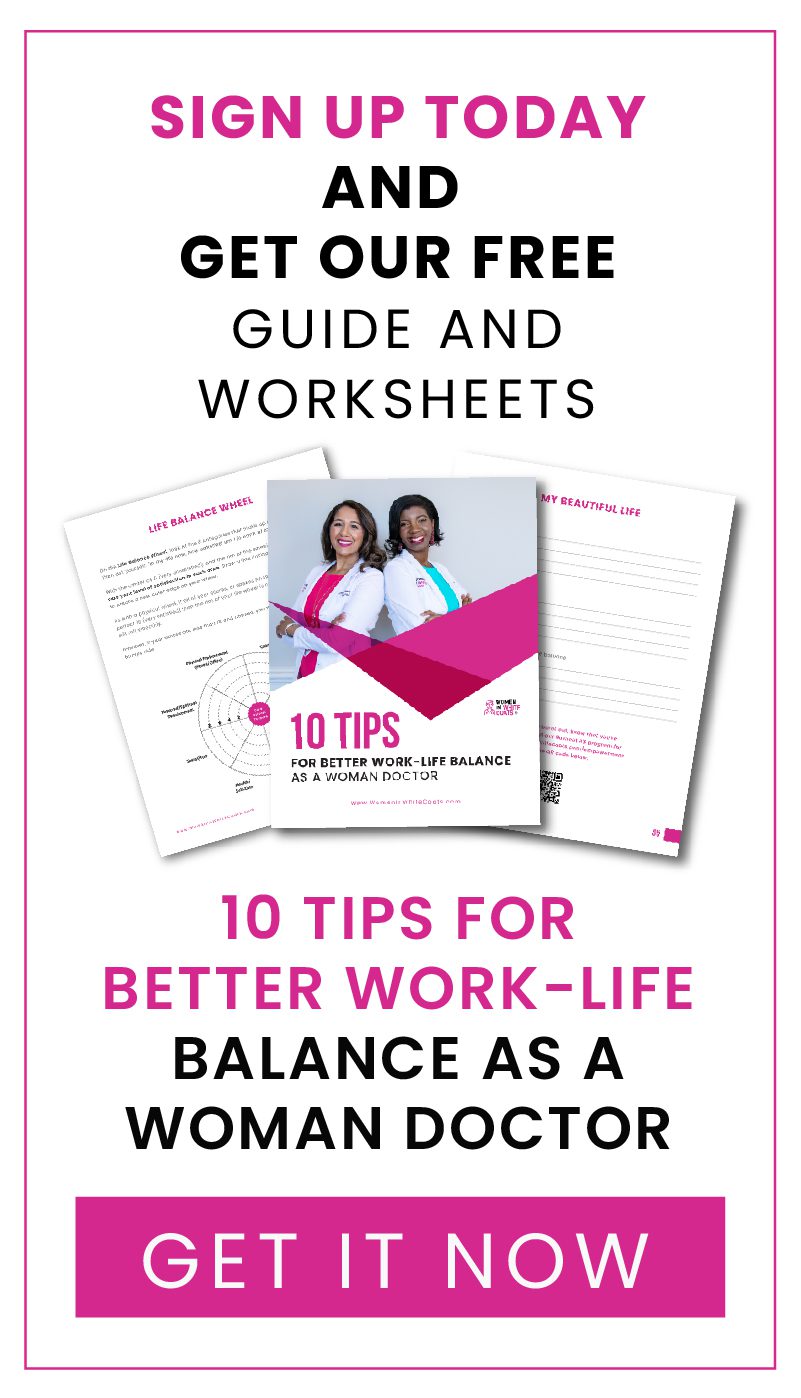“Breast is best”. This is something that you may have heard over and over again when it comes to infant feeding. We know that breastfeeding has a long list of benefits for both mom and baby. Depending on your field, you may discuss these benefits with the families you take care of on a regular basis. But as a doctor mom, it can be hard to keep up with what it takes to reap those benefits in your own life.
You may have struggled with fitting pregnancy and child-rearing into your career plans. And once your baby is born, you may have to return to work sooner than expected. It takes a lot of planning and effort to truly be successful at pumping as a doctor mom.
As a Pediatrician and mom of five breastfed babies, I know just how difficult it can be to balance working and pumping. So, allow me to share a few tips that have helped me along the way:
Before Returning to Work
Feed Regularly – It is important to get into a good rhythm with breastfeeding before you return to work. From the very beginning, I recommend breastfeeding your baby on demand – typically every 2-3 hours. This helps you to gain confidence and comfort with breastfeeding. It also helps to ensure that you maintain a good breast milk supply naturally before returning to work.
Start Pumping – You may have heard varying opinions on when to start pumping. I recommend starting when your milk “comes in”, typically by your baby’s 5th day of life. Pump twice a day – once in the morning and once at night – while you are still breastfeeding on demand.
To prevent depriving milk from your baby, it is best to pump immediately after a feeding. This way, you are leaving the breasts as empty as possible and sending your breasts and brain the signal to make more milk. This also gives your breasts time to “refill” before the next feeding. And you are able to save this milk to start introducing the bottle and for when you return to work.
Introduce a Bottle – Once you and your baby are more comfortable with breastfeeding (your baby latches well, is transferring milk and gaining weight normally), start practicing with the bottle. This can be as early as 2 weeks, but sometimes closer to 4 weeks of age. If possible, have someone else introduce a bottle of expressed breast milk just once a day while you continue to directly breastfeed otherwise. This way, you can get your baby used to the bottle and know how much he’ll need per feeding once you go back to work. Plus, having someone else give your baby a bottle still allows your baby to associate you with just the breast.
Start with 1-2 ounces of breastmilk in the bottle, and increase in 1/2 ounce increments until you find the right amount that makes your baby happy.
Talk to Your Employer – Before going back to work, be sure to understand the laws that protect breastfeeding mothers. These protections allow you to have devoted time and space to pump at work so that you can continue to provide your baby with the nourishment he needs. Have a discussion with your employer about your pumping needs and come up with a schedule that works for you and your work schedule.
Find out where you will pump, making sure it is a private, comfortable and clean area. Plan how long each of your pumping breaks will be. You will need at least 15 minutes if you are using a double-electric pump – likely longer if you have a hand pump. Set aside extra time to set up and clean your pump parts – not just pumping time.
Talk to Your Childcare Provider – Your childcare provider should be comfortable with handling breast milk. They should care about your milk just as much as you do! Explain the breastmilk storage guidelines, how to prepare bottles, and when it is absolutely necessary to throw out spoiled milk (though they should try to avoid wasting it at all costs!)
Plan Your Schedule – Plan to pump whenever your baby is getting a bottle in order to maintain your supply. By the time you return to work, this usually means every 3 hours. This will naturally space out as your baby gets older and starts taking solid foods.
If you have time, I recommend feeding your baby before work and pumping afterwards to ensure you are as “empty” as possible before you start working. Then, pump every 3 hours during the day and breastfeed on demand when you reunite with your baby.
Gather Your Supplies – Being prepared with the right tools for pumping as a doctor mom is so important for ultimate breastfeeding and pumping success. Here are a few of the things that really helped me on each of my pumping journeys:
- Double-electric pump – for the best output and to cut down on pumping time
- Spare pump parts – to avoid having to go out and buy spare parts if you forget yours at home
- Breastmilk storage bags or containers – for storing and transporting breastmilk
- Hands-free pumping bra – so that you can free your hands and still get work done while pumping
- Car adapter/battery pack for pump – for pumping on the go, and in the car if you need to
- Cleaning supplies – hand sanitizer, soap, brush, and a place to dry your supplies
- Hand pump – as a back-up if something goes wrong with your electric pump, and also useful for a quick pumping session
- Snacks/water – to keep yourself energized and hydrated
- Picture of your baby – to help increase your supply by reminding you why you are pumping in the first place
- Cooler with ice packs – for storing/transporting milk
- A pump bag to put it all in!

Pumping While at Work
Here are a few more things to consider when balancing breastfeeding and pumping at work:
Dress Intentionally – Avoid wearing a regular dress, so that you will not have to lift your entire dress and completely expose yourself while pumping. I found it helpful to wear a nursing tank under my shirt or a nursing dress to work. This way, I could just lift up my regular top and unhook my nursing top and feed. My belly stayed covered up, and only my breasts were exposed while pumping. (This is also helpful while breastfeeding in public).
Massage Breasts While Pumping – To maximize your output and maintain your supply, start from the top of your breasts and massage down whenever you’re expressing milk. This helps the milk to flow and can help to unblock any clogged ducts, especially early-on.
Store Milk Properly – Milk storage guidelines are set so that you can minimize the amount of bacteria that your baby is exposed to. Follow these guidelines to prevent your baby from getting sick. Clearly label your expressed milk with the date and time that it was pumped. Use freshly-pumped milk first (milk in the refrigerator), unless you have frozen milk that is expiring. The CDC has a chart with suggested milk storage guidelines.
Store Car Keys with the Breastmilk – Raise your hand if you’ve ever forgotten your breast milk at work! ME!! Pregnancy brain and mommy brain are really real. I had to learn to put my car keys with my pumped milk, so that it was impossible for me to leave work without the milk. That way, my baby could get the fresh milk he deserved!
Use the Breast Pump Flange as a Funnel – If you need to combine your expressed milk after pumping, take advantage of the breast flange (breast shield) that you used to pump. Place the long neck of the flange into the bottle that you need to pour your expressed milk in, and pour, using it as a funnel! This helps to minimize the chance that you’ll spill milk (no one wants spilled breast milk!)
Set reminders to drink water – It is important to stay hydrated while breastfeeding and pumping, but it is so easy to forget to drink water when you are busy at work. Set alarms or have a bottle of water on hand to drink during each of your pumping sessions at work. Drinking 100 ounces of water per day is ideal to help maintain your supply.
Remember, you can do it!
Breastfeeding has always been special to me. Even though I was away from my babies when I went back to work, I always felt like I had a connection to them through my breast milk. I loved breastfeeding, and learned to tolerate pumping because I knew it was one thing I could continue to do for my baby while we weren’t together.
Going back to work while breastfeeding and pumping takes a lot of planning and preparation. But, pumping as a doctor mom can still be a success. Use the tips above to get started and remind yourself that you are doing the best thing for you and your baby!
Need more information on your rights while pumping as a doctor mom? Check out this article on Knowing Your Breastfeeding Rights to protect this important role.
Petra McEwan, MD, FAAP, IBCLC, is a practicing pediatrician and Lactation Consultant in South Florida, where she lives with her husband and five kids. She is also a Women in White Coats Fellow. On her website, https://www.wifeymommydoc.com, she helps working wives and moms balance their many roles. She can be followed on Instagram and Facebook @wifeymommydoc.
We have developed a Burnout Diagnostic Quiz for you to discover the root cause of burnout for YOU. Not only that, but we also tell you how you can fix your burnout. It is only 7 questions and takes just one minute to complete! Take our free quiz at womeninwhitecoats.com/quiz.



